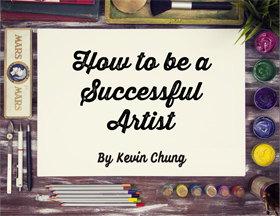“Be the change that you wish to see in the world.” – Mahatma Gandhi
Print available on Storenvy.
Everyone wants to live in a better world but have you done your part to make it better?
I am by no means better than anyone else. I am fallible to mistakes. I lose my temper. I don’t give as much as I can. Despite all of this, I am still trying to make the world a better place in my own way.
No, I’m not aspiring for world peace or trying to end world hunger, but I am trying to make my own dent in the world. Here are a few ways that I am trying to make a change in the world:
Inspiring Others
[bctt tweet=”The best way to inspire is by example”]
I have always found inspiration an interesting topic. We can’t force someone to be inspired. We can try to inspire people all we want, but I believe the best way to inspire is by example.
Even if you are in the beginning stages of your adventure, you are still farther along than others. If you can show people what is possible, you can become an inspiration to them.
Telling Positive Stories
Every day, we encounter people telling us how horrible the world is. The news mostly shows us the negative side of humanity. In my pursuit to help artists, I try to share the positive aspects of humanity.
I want to show people what is possible if you are dedicated to your craft. I want to show people that success is possible. I want to promote people who are making a difference in this world.
Sharing Knowledge
Knowledge is one of the most important things you can attain towards becoming a better artist, a better creative, and a better person. I am constantly on the quest to find new knowledge.
When you have knowledge, you can make better decisions. You can follow the footsteps of people who came before you , and you can also go off the beaten path.
[bctt tweet=”The more knowledgeable we all are, the better off we will be”]
That is why I want to share my knowledge with all of you. The more knowledgeable we all are, the better off we will be. It can be hard to make it on our own without seeking to become a more informed person.
Knowledge, however, isn’t all that is necessary to succeed in life. You must also take action.
Pushing People Into Action
What separates people who move up in life versus those who don’t? It’s not how smart you are, how attractive you are, or how loud you are. It’s taking the knowledge you have and putting it into action.
You can be smart, and still make nothing of your life. Attractiveness gives you a slight edge, but it can only take you so far. You can be the most vocal person around, but no one has to listen.
[bctt tweet=”It is only when you put your ideas into action that you can succeed”]
It is only when you put your ideas into action that you can succeed. That is why I try to push people into doing something.
If you are feeling stuck in your art practice or in your life, don’t sit around worrying about it. Do something about it.
[bctt tweet=”Taking action provides incredible results”]
Taking action provides incredible results. If I didn’t take action, I would use all my free time watching Netflix. Instead, I choose to take action and make progress on my goals. You should too.















Follow Me!